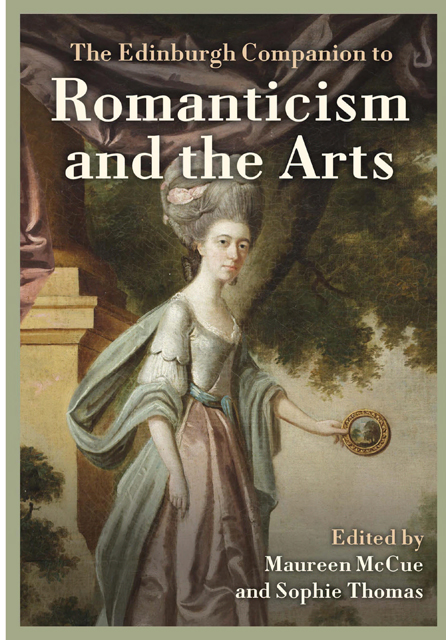19 - Illustrated Poetry in the Romantic Period
Published online by Cambridge University Press: 25 April 2023
Summary
Reviewing a collection of ‘Illustrated Books’ in 1844, the Quarterly Review laments ‘the rage for ornamented, or as they are now termed, “Illustrated” or “Pictorial” editions of books’ (Anonymous, ‘Illustrated Books’ 1844, 168). Images have long been added to the written or printed text – whether through the illumination of manuscripts, by cutting and pasting in existing engravings or by the addition of newly commissioned engravings (on copper, wood or steel) to reprinted or newly published texts. What is new, as the Quarterly Review makes clear, is the term ‘illustration’ used in place of the older ‘ornamented’ or ‘embellished’. This chapter explores the creation of the new category of the ‘illustration’ evident to the 1844 reviewer. In doing so it follows some of the concepts that shape the 1844 account, not just the shift from the ‘ornamented’ to the ‘illustrated’ text but also the opposition between ‘ideal’ and ‘real’ illustration. These are not terms that make sense to a modern reader: whereas the Quarterly Review contains the word ‘illustration’ within quotation marks, the modern reader is likely instead to require quotation marks for the ‘real’. Taking up many of the themes of the 1844 essay, Gillen D’Arcy Wood’s The Shock of the Real presents the ‘real’ of the panorama and of J. M. W. Turner’s illustrations to Scott’s poetry as signs constructed by culture (D’Arcy Wood 2001, 111). The shift he traces ‘is not between M. H. Abrams’ mirror and lamp, but between the lamp and the magic lantern’ (7). For the Quarterly and for many of the consumers of ‘illustration’ in the early nineteenth century, the ‘real’ is a category which legitimates visual images. In doing so it displaces an earlier model of book illustration centred on the illustration of poetry.
Although the word ‘illustration’ had begun to settle into its now familiar meaning of an image specifically created or commissioned to accompany text in the second decade of the nineteenth century, the Quarterly still insists on scare quotes. At the turn of the nineteenth century, we are told, ‘“Illustrated” books were of comparatively rare occurrence’ but now:
Every engraving, every woodcut, every ornamented letter, however meaningless, however absurd, is an illustration; and provided such things are rather numerous in proportion to the extent of the work, it is forthwith dubbed ‘an illustrated edition,’ and the public are good-natured enough to buy it.
- Type
- Chapter
- Information
- The Edinburgh Companion to Romanticism and the Arts , pp. 356 - 373Publisher: Edinburgh University PressPrint publication year: 2022



